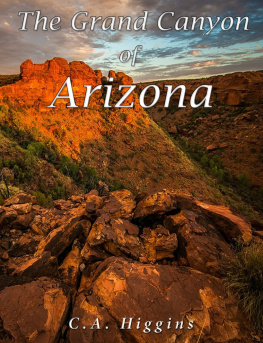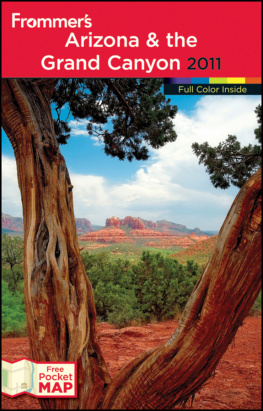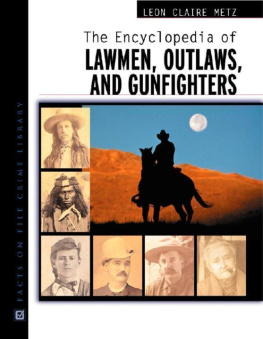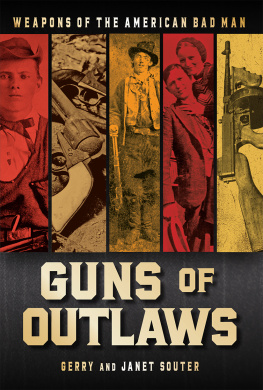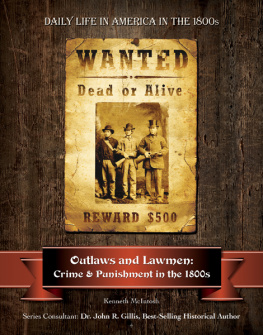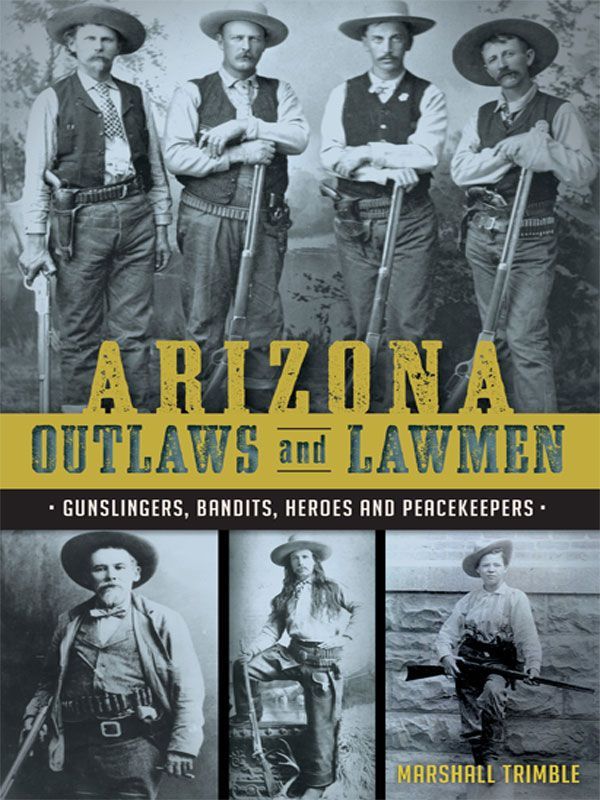

Published by The History Press
Charleston, SC 29403
www.historypress.net
Copyright 2015 by Marshall Trimble
All rights reserved
First published 2015
e-book edition 2015
ISBN 978.1.62585.530.5
Library of Congress Control Number: 2014959950
print edition ISBN 978.1.62619.932.3
Notice: The information in this book is true and complete to the best of our knowledge. It is offered without guarantee on the part of the author or The History Press. The author and The History Press disclaim all liability in connection with the use of this book.
All rights reserved. No part of this book may be reproduced or transmitted in any form whatsoever without prior written permission from the publisher except in the case of brief quotations embodied in critical articles and reviews.
This book is dedicated to my beloved grandson, Liam, and granddaughter, Annabella Rose. Although a few thousand miles separate us, youre always on my mind .
CONTENTS
INTRODUCTION
People need heroes, and if they dont have them they make them up. The Old West didnt have that problem; it had an abundance of the real deal, and in that land of giants, the ones who stood head and shoulders above the rest were the gunfighters. They were Americas rendition of King Arthurs Knights of the Round Table. Some were knights-errant on horseback, and some werent.
Why do these hard-riding heroes who lived and died by the gun continue to hold our fascination? Maybe its because they take us outside of ourselves and enable us to escape the drudgery of our daily lives. Were drawn to them because we see them as rebels who werent afraid to take on the establishment. We admire those who live on the edge, those who defy authority. In an odd way, they were the manifestation of the traits that made America great: self-reliance, independence, resourcefulness, toughness and courageousness. They were huge myths with a whole lot of reality thrown in.
We have a normal hunger for a heroic past, and the West provides that. The West was a land of superlatives and open spaces and a place where men and women could reinvent themselves.
Arizona was the last refuge of the restive lawmen and desperadoes of the Old West. Its wild, untamed country, lack of good roads and proximity to the Mexican border made it ideally suited to men riding the Owl Hoot Trail. The rich boomtowns, stagecoaches and railroads carrying express boxes loaded with gold coins, along with large herds of cattle, were easy pickings in the remote regions by bands of outlaws and cow thieves.
In order to bring law and order to the last frontier, it took a brave, hardy breed to pin on a badge and challenge the bands of outlaws, many of whom were psychopaths and sociopaths who preyed on the weak and often killed without remorse. Sworn to keep the peace, they endured hardships and hunger, and sometimes they died in the line of duty.
BUCKEY ONEILL AND THE TRAIN ROBBERS
Arizona attracted a number of flamboyant characters during its territorial years, but none was more colorful than William O. Buckey ONeill. His good looks and witty charm made him a darling of the ladies, and his gallant charisma made him a natural leader of men. He made his reputation as a newspaperman, judge, politician, lawman, soldier and go-for-it gambler. His nickname came from bucking the tiger, or betting against the house in the popular game of faro on Prescotts famed Whiskey Row.
He stood nearly six feet tall with a stylish mustache; dark, handsome looks; and a devil-may-care persona that attracted legions of admirers. Gregarious, witty and self-confident, he could quote Lord Byron at the drop of a hat and was fearless in the face of danger.
Buckey was born in Ireland and was only nineteen years old when he rode into Phoenix in 1879. Seeking adventure, he soon headed for Tombstone during the heyday of Wyatt Earp, Doc Holliday and Johnny Ringo but returned to Phoenix three years later to become a deputy city marshal under the famed Henry Garfias. His next stop was Prescott, where in 1888 he got into politics and was elected sheriff of Yavapai County.
On a cold March day in 1889, not long after Buckey had taken the oath of office, four Hash Knife cowboysBill Sterin, John Halford, Dan Harvick and J.J. Smithdecided to up their station in life by robbing the Atlantic and Pacific Eastbound No. 2 passenger train. They planned to pull the heist while it was stopped to replenish its wood box at Canyon Diablo, twenty-four miles west of Winslow.
The train robbers came out of the dark shadows of the section house, poked their six-guns in the faces of the crew and forced open the express safe, taking some $7,000 in cash, pocket watches and a set of diamond earrings. They then rode off into the night in a snowstorm. The plan was to ride south a few miles to deceive the posse and then turn north and head for Utah.

Buckey ONeill was one of Arizonas most colorful characters. The swashbuckling Irishman was a newspaperman, politician, mayor of Prescott and sheriff of Yavapai County. Courtesy of Southwest Studies Archives .
About five miles south of Canyon Diablo, they stopped to divide up the loot. Among the booty was a pair of diamond earrings. Smith pried the diamonds loose from their settings and dropped them into his pocket, where he proceeded to forget about them. Later, he unwittingly scraped some tobacco crumbs and the diamonds out of his pocket and put them in his pipe. Afterward, he knocked the ashes out on his boot heel, and with them went the diamonds.
Canyon Diablo was in Yavapai County back in those days before Coconino County was created and was about the same size as the entire state of New York. Buckey had been in office only three months, and this would be his first real test as a lawman.
ONeill and his deputy, Jim Black, were already in Flagstaff when the robbery occurred. They were soon joined by special deputy Ed St. Clair of Flagstaff and two railroad detectives, Carl Holton and Fred Fornoff.
They picked up the outlaws trail in the high desert north of Flagstaff and followed it until they met a Navajo woman who told them four men had run off that morning with a mutton shed just skinned. Buckey sent a young Navajo boy to Winslow to ask the telegrapher to send messages to the villages in southern Utah to be on the lookout.

A Santa Fe passenger train rolls over the Canyon Diablo during the 1880s. Courtesy of Southwest Studies Archives .
Meanwhile in Utah, the four outlaws arrived at the small Mormon community of Cannonville, located in a valley just east of Bryce Canyon. Word had reached residents to be on the lookout for the four desperadoes, and not long after, they came riding boldly into town.
The Mormons treated them with reserved kindness, fed them and offered them a place to sleep. The four hard-looking strangers cautiously accepted the hospitality and settled in for the night. While the trail-weary train robbers were sleeping, the local constable, along with a posse of farmers, got the drop on them, but J.J. Smith was able to turn the tables. He nabbed the town patriarch, who then ordered the citizens to throw down their guns. The marauders took their weapons, stole some supplies and rode out of town firing indignant shots into the air.



